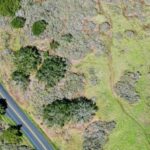Understanding Contour Lines and Their Relationship to Elevation
Have you ever looked at a map and noticed those curved lines that seem to crisscross the landscape? These lines are not mere decorations but are actually crucial elements known as contour lines. Contour lines play a significant role in representing the elevation and shape of the terrain on a map. By understanding how to interpret these lines, you can gain valuable insights into the topography of an area. In this article, we will delve into the world of contour lines and explore how they indicate elevation.
Interpreting Contour Lines
Contour lines are lines drawn on a map to connect points of the same elevation. Each contour line represents a specific elevation above sea level, and the spacing between contour lines indicates the steepness of the terrain. When contour lines are close together, it signifies a steep slope, while widely spaced contour lines indicate a gentle slope. By following a contour line, you can visualize the shape of the land and identify features such as hills, valleys, and plateaus.
Contour lines never intersect, as they represent a continuous line of constant elevation. However, they may merge to form a depression contour, indicating a lower elevation area such as a valley or basin. On the other hand, closely packed contour lines forming concentric circles denote a hill or peak. By examining the pattern of contour lines on a map, you can discern the overall topography of the terrain and make informed decisions when navigating through an area.
The Relationship Between Contour Lines and Elevation
Contour lines provide a clear depiction of the elevation changes across a landscape. By studying the elevation values associated with contour lines, you can determine the height of various points on the map. For example, if the contour interval is 50 feet, each contour line represents a change in elevation of 50 feet. By counting the number of contour lines crossed from one point to another, you can calculate the difference in elevation between the two points.
Contour lines also help in visualizing the three-dimensional nature of the terrain on a two-dimensional map. By tracing a path along contour lines, you can anticipate changes in elevation and prepare for uphill climbs or downhill descents. This information is invaluable for hikers, climbers, and outdoor enthusiasts who rely on maps to navigate through diverse landscapes.
Using Contour Lines for Navigation
Contour lines are essential tools for navigation, enabling map users to understand the lay of the land and plan their routes effectively. By following contour lines, you can choose the path of least resistance, avoiding steep inclines or treacherous terrain. Contour lines also help in identifying prominent features such as ridges, saddles, and cliffs, which can serve as landmarks for orientation.
When navigating with a map that features contour lines, it is essential to pay attention to the contour interval and scale of the map. A smaller contour interval provides more detailed information about elevation changes, while a larger scale map offers a broader view of the terrain. By combining this knowledge with map-reading skills, you can confidently explore unfamiliar areas and safely reach your destination.
Incorporating Contour Lines in Geographic Information Systems
In the realm of Geographic Information Systems (GIS), contour lines play a vital role in creating digital elevation models (DEMs) and visualizing terrain data. By digitizing contour lines and converting them into elevation values, GIS professionals can generate accurate representations of the Earth’s surface. DEMs derived from contour lines are used in various applications, including urban planning, natural resource management, and environmental modeling.
Conclusion: Harnessing the Power of Contour Lines
Contour lines are not just lines on a map but powerful tools that provide valuable insights into the elevation and shape of the terrain. By mastering the art of interpreting contour lines, you can unlock a wealth of information about the topography of an area. Whether you are a seasoned explorer or a GIS professional, understanding contour lines is essential for navigating through diverse landscapes and creating accurate representations of the Earth’s surface. So, the next time you look at a map, remember to pay attention to those curved lines—they hold the key to unraveling the mysteries of elevation.





